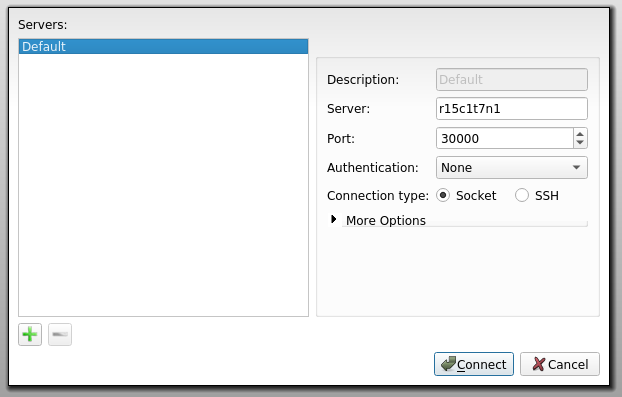- Infos im HLRS Wiki sind nicht rechtsverbindlich und ohne Gewähr -
- Information contained in the HLRS Wiki is not legally binding and HLRS is not responsible for any damages that might result from its use -
Vampir
| The Vampir suite of tools offers scalable event analysis through a nice GUI which enables a fast and interactive rendering of very complex performance data. The suite consists of Vampirtrace, Vampir and Vampirserver. Ultra large data volumes can be analyzed with a parallel version of Vampirserver, loading and analysing the data on the compute nodes with the GUI of Vampir attaching to it.
Vampir is based on standard QT and works on desktop Unix workstations as well as on parallel production systems. The program is available for nearly all platforms like Linux-based PCs and Clusters, IBM, SGI, SUN. NEC, HP, and Apple. |
| ||||||||||||
Usage
In order to use Vampir, You first need to generate a trace of Your application, preferrably using VampirTrace. This trace consists of a file for each MPI process and an OTF-file (Open Trace Format) describing the other files. Using environment variables (starting with VT_):
Please note, that being an MPI-tool, VampirTrace is dependent not only on the compiler being used, but also on the MPI-version.
You may recompile, specifying the amount of instrumentation You want to include, e.g. -vt:mpi for MPI instrumentation, -vt:compinst for compiler-based function instrumentation:
To analyse Your application, for small traces (<16 processes, only few GB of trace data), use vampir standalone
For large-scale traces (up to many thousand MPI processes), use the parallel VampirServer (on compute nodes allocated through the queuing system), and attach to it using vampir:
then on the head-node use the Vampir-GUI to "Remote open" the same file by attaching to the heavy-weight, compute nodes:
Please note, that vampirserver-core is memory-bound and may work best if started with only one MPI process per node, or one per socket, e.g. use Open MPI's option to mpirun -bysocket.
Using Vampirserver
Hermit special
Request an interactive session
Load the vampirserver module
Start the vampirserver on the compute nodes using
This will show you a connection host and port:
Launching VampirServer... VampirServer 7.6.2 (r7777) Licensed to HLRS Running 31 analysis processes... (abort with vampirserver stop 10) VampirServer <10> listens on: nid03447:30000
Now forward this to the login node:

